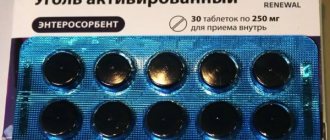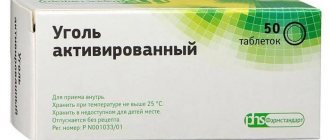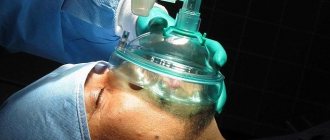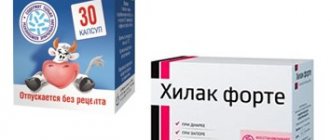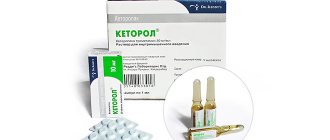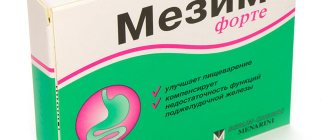Modern medicine confirms the well-known truth - everything is poison and everything is medicine. One such example is botulinum toxin. This is the most toxic substance, one glass of which is enough to poison the entire population of the planet. But, despite this, botulinum toxin is successfully used in cosmetology, because even minimal doses of this substance help eliminate numerous wrinkles on the face and make the face much younger.
Thanks to these properties, botulinum toxin is becoming increasingly popular in cosmetology. Based on it, several cosmetic compositions have been developed that are successfully used, helping to eliminate wrinkles for a long time.
What is botulinum toxin
Clostridium botulinum bacteria, in the absence of oxygen, produce a powerful organic poison called botulinum toxin. Most often it is found in canned foods, where favorable conditions are created for the growth of bacteria. When the toxin enters the body, damage to the nervous system and paralysis of the respiratory system occurs, which can lead to death, especially if the patient was not provided with timely medical care.
Initially, botulinum toxin was used only for medical purposes for patients with ophthalmological and neurological diseases. Before use, doctors had to carefully purify and dilute the toxin, and then inject patients with botulinum toxin poison to prevent muscle spasms. After some time, scientists noticed the rejuvenating effect of such injections, and therefore they began to be actively used for cosmetic purposes.
It is unlikely that anyone will argue that the first wrinkles on the face are the result of active facial expressions and most often occur in the area of the nasolabial triangle, forehead and eyes. After botulinum toxin is injected under the skin, it blocks the transmission of nerve impulses to the facial muscles, preventing them from contracting. As a result, the facial muscles relax and wrinkles are smoothed out naturally.
It is worth knowing that the final result appears 2 weeks after the procedure and lasts for six months.
However, this is not the only advantage of botulinum toxin. Throughout the entire duration of the injection, the facial muscles are motionless, the person gets used to this and in the future his facial expressions are no longer so active. This will prevent new wrinkles from appearing and preserve youth.
Currently, scientists have identified 9 types of this poison, but only 2 of them are used in cosmetology - botulinum toxin types A and B, while its other varieties are prohibited.
Botulinum toxin type A - hemagglutinin complex ()
The drug is dispensed, stored and used in specialized medical institutions. The drug is stored in a separate closed, labeled box in the refrigerator.
Immediately after injection, the drug solution remaining in the vial or syringe must be inactivated with sodium hypochlorite solution (0.5%). Alternatively, the contents of unused vials should be reconstituted with a small amount of water and then autoclaved. All auxiliary materials that have been in contact with the drug must be disposed of in accordance with the rules for the destruction of biological waste. Spilled solution of the drug should be wiped with an absorbent cloth soaked in 1% sodium hypochlorite solution.
In cases of surgical intervention in the facial area prior to treatment, the time interval between surgery and administration should be at least 3 months.
As with any treatment that enables previously immobilized patients to return to physical activity, the patient should be counseled about the importance of reintroducing activity gradually.
The drug should be used with caution in case of severe weakness or atrophy in the muscle to which the action of the drug is directed. The drug should be used with caution when treating patients with peripheral motor neuropathic diseases (for example, amyotrophic lateral sclerosis or motor neuropathy).
The drug should be used with extreme caution and under close monitoring in patients with subclinical or clinical signs of impaired neuromuscular transmission, such as myasthenia gravis or Lambert-Eaton syndrome; This group of patients has increased sensitivity to this drug, which can lead to the development of severe muscle weakness. Patients with neuromuscular diseases may be at risk for clinically significant systemic effects, including severe dysphagia and respiratory distress, when administered at usual doses of the drug. Treatment of such patients should be carried out with caution.
Blepharospasm
Rare blinking associated with the injection of botulinum toxin into the orbicularis oculi muscle can lead to pathological changes in the cornea. You should carefully study the sensitivity of the cornea of eyes that have been previously operated on, avoid injecting the drug into the lower eyelid area to prevent the development of eyelid inversion, and also actively treat any defects in the epithelial cover. For this purpose, drops with protective properties, ointments, therapeutic soft contact lenses, closing the eye with a bandage or another method can be used.
Ecchymosis easily occurs in the soft tissues of the eyelids. To reduce the frequency of their occurrence, it is necessary to apply light pressure to the injection site immediately after administering the drug.
Because botulinum toxin has anticholinergic activity, it should be used with caution in patients with angle-closure glaucoma.
Cervical dystonia (spasmodic torticollis)
Patients with spasmodic torticollis should be informed of the possibility of developing dysphagia of varying severity, ranging from mild to severe. Dysphagia may persist for 2 to 3 weeks after drug administration, and cases of dysphagia persisting for up to 5 months have been reported. Dysphagia may be a potential cause of aspiration and dyspnea requiring intubation. In rare cases, aspiration pneumonia may develop and be fatal.
The incidence of dysphagia can be reduced by reducing the dose of the drug injected into the sternocleidomastoid muscle to 100 units or less. It has been shown that patients with reduced neck muscle mass, as well as patients in whom the drug is injected into the sternocleidomastoid muscles on both sides, are at increased risk of developing dysphagia. The development of dysphagia is associated with the penetration of the toxin into the muscular layer of the esophageal wall. Administration of the drug into the levator scapulae muscle may be associated with an increased risk of developing upper respiratory tract infections and dysphagia.
Dysphagia may contribute to limited food and water intake, leading to weight loss and dehydration. The group at increased risk of developing dysphagia after administration of the drug consists of patients with subclinical dysphagia.
Paralytic strabismus (strabismus)
The drug is not effective in chronic paralytic strabismus. In combination with surgical treatment, it only causes a decrease in contracture of the antagonist muscles. The effectiveness of the drug in the treatment of strabismus of more than 50 prismatic diopters, restrictive strabismus, Duane's syndrome with weakness of the lateral rectus muscle, secondary strabismus caused by excessive surgical resection of the antagonist muscle is questionable. To increase the effectiveness of treatment, you can resort to repeated administration of the drug over time.
During the administration of the drug, the needle may penetrate the orbit with the development of retrobulbar hemorrhages, which can impair the blood supply to the retina; therefore, during the procedure, it is recommended to have instruments available for decompression of the orbit.
The condition of paralysis of one or more muscles of the eyeball can lead to loss of orientation in space and double vision. Symptoms can be reduced by closing the affected eye.
Correction of facial wrinkles
Rare blinking associated with the injection of the drug into the orbicularis oculi muscle can create conditions for frequent contact of the cornea with environmental factors, the occurrence of epithelial defects and corneal erosions, especially in patients with damage to the VII pair of cranial nerves.
The drug should be used with caution in the following cases:
- with pronounced facial asymmetry;
- with ptosis, dermatochalasis, deep scars;
- in patients with thick skin or in the absence of significant smoothing of vertical facial wrinkles between the eyebrows during mechanical stretching of the skin.
Impact on the ability to drive vehicles and operate machinery
The drug can lead to asthenia, muscle weakness, dizziness and visual disturbances. If such symptoms develop, there may be danger when driving or operating moving machinery.
Preparations based on botulinum toxin
Scientists have created several drugs that contain botulinum toxin:
- Botox - made in the USA,
- Xeomin - produced in Germany,
- Dysport - made in France,
- Lantox - made in China.
These types of drugs differ in composition and storage rules, but they all contain botulinum toxin type A. In its pure form it is found in Lantox and Xeomin, and with hemagglutinin in Botox and Dysport. The action of botulinum toxin in medications is based on blocking nerve impulses that cause muscle contraction. So, botulinum toxin preparations.
Botox
The medicine is used to relieve muscle spasms, eliminate strabismus and remove facial wrinkles. The ingredients of Botox are botulinum toxin type A, sodium chloride and albumin. Intramuscular injections are most often performed without anesthesia. The desired effect occurs approximately 7 days after the injection and lasts for 3-7 months. Since Botox has large molecules, it has a targeted effect on the muscle and does not affect nearby ones. This drug takes a long time to leave the body.
Xeomin
This medicine is highly purified, so it is considered the safest drug. In addition to the presence of botulinum toxin type A in Xeomin, the drug also contains albumin and sucrose. This composition has a small molecular weight, which allows it to be used to affect the smallest facial muscles, while maintaining facial expressions. Xeomin helps combat the following changes that occur on the face with age:
- wrinkles around the lips,
- on the neckline,
- between the eyebrows,
- on the forehead.
Dysport
It is considered an analogue of Botox, which is only slightly different in composition. Instead of sodium, Dysport contains lactose, while the other components are the same. Because Dysport molecules are not similar to other drugs, the injection works differently:
- the effect occurs 3 days after the injection,
- the drug can have an effect on neighboring muscles, which can lead to side effects,
- quickly eliminated from the body.
That is why the cost of Dysport is slightly less than that of Botox. But due to the fact that it requires slightly more than Botox when performing injections on the same facial areas, the final cost of the rejuvenation procedure turns out to be similar.
Lantox
This Chinese drug is less expensive than the previous ones. It helps to relax the facial muscles and eliminate the following cosmetic imperfections:
- gives contour to the face,
- helps smooth out wrinkles,
- lifts the tip of the nose,
- corrects the shape of the eyebrows,
- regulates sweating.
After a Lantox injection, the effect appears on day 2 and lasts for at least 5 months. If you frequently inject this drug, its effect will be more noticeable, and the rejuvenating effect will last longer.
Side effects
Local reactions: 2–5% - microhematomas (up to 7 days), pain at the injection site (up to 1 day). Systemic reactions when using the drug in a high dose (more than 250 units): general or local weakness (within 7 days), falls. In the treatment of blepharospasm, hemifacial spasm: ptosis (15-20%), lacrimation (0.5-1%), rarely - ectropion, keratitis, diplopia, entropion, ecchymosis in the soft tissues of the eyeball. When injected into both sternocleidomastoid muscles, dysphagia (2–5%) occurs. As a rule, these side effects do not require additional therapy and regress within 1 month after administration of the drug.
Indications
In modern medicine, botulinum toxin is used to treat hyperhidrosis. Botox toxins injected into the armpits, palms or feet relieve a person of excessive sweating.
Botulinum toxin is used in urology to treat urinary disorders. Some patients, as a result of exposure to toxic drugs with botulinum toxin, manage to get rid of migraines and severe headaches. In this case, skin sensitivity does not change, and botulinum toxin preparations are eliminated from the body after six months.
Botulinum toxin is used in neurology to relieve muscle spasms, which is the basis for its widespread use in cosmetology. Thanks to this quality, Botox toxins help patients look younger.
Toxin injections help women over 30 years old get rid of wrinkles. Most often they appear:
- around eyes,
- on the forehead,
- between the eyebrows.
Women are also concerned about nasolabial folds. Their appearance is explained by genetic predisposition and natural aging of the skin. You can also get rid of them with botulinum toxin. Since the mechanism of action of botulinum toxin is based on relaxation of the facial muscles, the skin is smoothed.
In medicine, botulinum toxin injections are used as an analogue of facial plastic surgery. For example, if the eyelids suddenly droop, doctors can correct them, as well as correct the shape of the eyebrows and lips.
The effectiveness of the procedure is directly related to the elasticity of the skin and the amount of medication used. It is important to know that the younger the patient, the better the result. Older patients need to combine Botox injections with gel.
Often, women turn to doctors with a request to eliminate wrinkles in the corners of the eyes, on the nose and between the eyebrows. However, people who have a lot of skin on their forehead should not resort to this method, as the procedure can lead to drooping eyebrows.
When carrying out the procedure, doctors use very thin needles, which makes the injections painless, and there are no scars or scars left on the skin.
Application in dermatology
Botulinum toxin is used to treat excessive sweating (hyperhidrosis) of the armpits, legs, and palms.
But the poison is widely used in dermatology to eliminate skin problems associated with age-related changes and adverse environmental factors. Expression wrinkles can appear at a young age due to overstrain of the facial muscles, which leads not only to aesthetic problems.
With constant nervous tension, headaches and a number of neurological diseases associated with muscle spasm develop.
Therefore, the use of drugs with a botulinum component is not so much a cosmetic procedure as a medical procedure.
In Russia, several Botox preparations common on the cosmetology market are approved for use.
Registered funds:
- Xeomin (Germany);
- Botox (USA);
- Dysport (France);
- Lantox (China).
Of the four drugs, German is rarely used for cosmetic purposes; the rest are used in both therapeutic and corrective procedures.
Notes[ | ]
- Supotnitsky M.V.
Chapter 1.5. Toxins of pathogenic bacteria // Microorganisms, toxins and epidemics. - M., 2000. - 376 p. - Toxins of Biological Origin (undefined)
. Retrieved June 19, 2010. Archived August 25, 2011. - ↑ 1 2 3 Natalya Astavina.
Botulinum toxin. Two sides of the same coin. (Russian) // Consilium provisorum: journal. - 2009. - No. 2 (58). — P. 6-9. Archived June 1, 2010. - How to raise eyebrows with Botox: before and after photos, injection points (Russian). Eyebrows at Home (December 10, 2018). Retrieved December 14, 2018.
- The US has approved the treatment of chronic migraines with Botox
- Creation of bacteriological weapons in the USA (unspecified)
. Retrieved July 23, 2009. - ↑ 1 2 3 V.N.
Alexandrov, V.I. Emelyanov. Botulinum toxins and substance XR // Toxins as chemical weapons (Russian) (pdf). "Chemistry and Chemists". - chapter from the textbook “Toxic Substances”, M. Voenizdat, 1990. Date of access July 23, 2010. Archived April 4, 2012. - Defalgue, Ray J., Wright, Amos J.
The Puzzling Death of Reinhard Heydrich // Bulletin of Anesthesia History. - January 2009. - T. 27, issue. 1. - P. 6. Archived July 20, 2011. - W. Seth Carus, Center for Counterproliferation Research, National Defense University.
Bioterrorism and biocrimes: the illicit use of biological agents since 1900. - The Minerva Group, Inc, 2002. - P. 89. - 220 p. — ISBN 9781410100238. - Modern means of destruction (undefined)
(ppt). Retrieved July 31, 2009. - Botulism on eurolab.ua (unspecified)
. Retrieved July 19, 2009. Archived February 1, 2011.
Prevention
The main feature of the toxin is that it is destroyed at a temperature of 100 degrees. Therefore, it is important to heat treat all food products that raise doubts about their quality and freshness.
Preventive actions:
- Compliance with the recipe and mode of canning food, especially meat and fish.
- Thermal processing of food.
- Adding vinegar to low acidity foods (for homemade preparations).
- Sealing of mushrooms (botulinum toxin is released when soil residues enter the preservation).
Basic rules of prevention will help preserve human health and life. Mortality from botulinum toxin accounts for 50% of all cases of poisoning in adults if first aid is not provided.
Video: Botulinum toxin - poison or medicine
The quarantine is ending, but there is still a crisis outside and it is unclear when it will end. It's time to upgrade your skills and learn a new profession! But what to do, you ask, if you don’t currently have the funds for expensive courses? No problem! On the service https://sliwbl.biz/ you can find and download almost any online course for free. Remember that your level of competence and income depends only on you.
Read further:
Proposed mechanisms of dental cyst formation
NewLife Alcoholism and Drug Addiction Treatment Clinic
Thiol poisons: what they are, where they are found, effects on humans
Surgical instruments. Scalpels, surgical knives and their varieties
Where can you recover from alcoholism, drug addiction and gambling addiction in Kharkov?
Article rating:
( 1 ratings, average: 5.00 out of 5)
Share with friends:
You may also be interested in:
Can there be botulism in jam?
Can botulism be killed by boiling?
What foods can cause botulism?
Can baby botulism be caused by honey?
Treatment for toxin poisoning
At the first symptoms of poisoning, you should immediately seek help from a doctor, without thinking about what to do or how to treat yourself.
Today there is no specific treatment regimen for such poisoning, but the methods are similar using anti-botulinum serum. It is administered intravenously; before this, a sensitivity test is necessary, since the risk of developing anaphylactic shock is high.
Before treatment, the patient is examined to detect botulinum poison in the body. Diagnostic measures include collecting urine and blood, gastric lavage water, or vomit if the person is vomiting. In some cases, antibacterial drugs are also prescribed along with serum, this is especially important in children.
Entry of botulinum toxin into enterocytes
Botulinum toxin enters enterocytes via receptor-mediated endocytosis, which requires the C-terminal region of the heavy chain, enters the bloodstream and is then endocytosed by neurons [9]. The binding of the toxin to the cell membrane is described by a two-receptor model: first, the poison is recognized by gangliosides with two or more sialic acid residues, for example, GT1b. The affinity of this interaction is low, but as a result it binds more effectively to secondary receptors - the membrane proteins Syt-II and SV2C. As a result of endocytosis, botulinum toxin ends up in endosomes. The light chains then translocate across the endosomal membrane. In this case, the heavy chains form a channel in the membrane through which the light chain passes. Translocation is inhibited by agents that prevent the decrease in endosomal pH (for example, chloroquine).
Toxicity[ | ]
Botulinum toxin is one of the most complex proteins synthesized by a living organism. Its mass is about 150 thousand atomic mass units, which is three times the typical size of a protein chain; few proteins (eg titin) exceed this average size.
The poison closest to botulinum toxin, both in structure and strength, is tetanospasmin. It is produced by another species of clostridia - Clostridium tetani, the causative agent of tetanus. Nevertheless, it is inferior to botulinum toxin in toxicity and has a lower molecular weight - 140 thousand a. eat.

